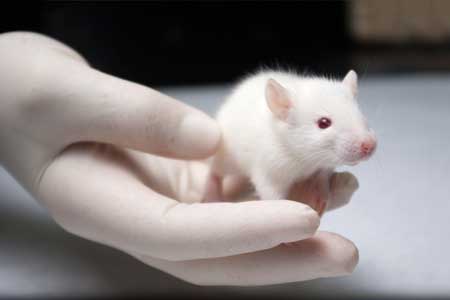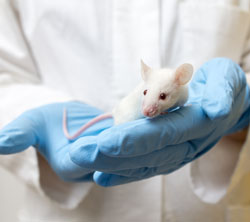Smoking Pot While Pregnant is a No-No
Mom, Don’t Think Smoking Pot When Pregnant is Harmless for your Child
In a new article in Science, Jasmine Hurd reports on a large sample of mothers who smoked pot while pregnant. Their offspring were more anxious, hyperactive, and aggressive and had higher levels of the stress hormone cortisol in their hair at ages 3-6.
When Superstorm Sandy hit, mothers who were stressed and smoked pot while pregnant had children 31 times more like to have oppositional defiant disorder and 7 times more likely to have an anxiety disorder. Stress may interact negatively with the effects of pot.
In fetuses aborted after being exposed to pot while in utero had decreased dopamine receptors in the their amygdala and n. accumbens, a reward center in brain. In animal studies, pregnant mother rodents who were exposed to THC had offspring more likely to use heroin.
DADS’ BEHAVIOR COUNTS TOO. Dad’s exposure to THC as an adult also led to offspring who preferred opiates. This was based on epigenetic changes passed on in the sperm. To the extent that this also happens in humans, one could ask how much of the current opiate epidemic is based on parental use of marijuana. Mom’s and dad’s smoking pot could make their offspring more vulnerable to opiate addiction.
Early Precursors of Mood Disorders in Young Children of Parents with Bipolar or Unipolar Disorder

At the 2020 meeting of the International Society for Bipolar Disorders, researcher Caroline Vandeleur presented findings from a 13-year study of children in Switzerland who have a parent with bipolar disorder or major depressive disorder. In contrast to findings from the US presented by Danella Hafeman, Vandeleur and colleagues found no evidence of psychopathology in 4 year-olds. They did find that in 7-year-olds, children of a parent with major depressive disorder were four times more likely to have a separation anxiety disorder. In an overall sample of 449 children with a mean age of 10 who were followed up for 13 years, major depression tended to be preceded by anxiety disorders. Participants who went on to be diagnosed with bipolar disorder had earlier symptoms of depression, subthreshold hypomania, conduct disorders, and drug abuse. These were especially common in those who had a parent with bipolar disorder.
Editor’s Note: These data indirectly confirm other observations in which children at high risk for mood disorders in the US showed earlier signs of psychopathology than those in other countries including the Netherlands and Canada.
Neurotransmitters Can Also Function As Epigenetic Marks

The most common epigenetic marks involve methylation of DNA (which usually inhibits gene transcription) and the acetylation and methylation of histones. Acetylation opens or loosens the winding of DNA around the histones and facilitates transcription, while methylation of histones leaves the DNA tightly wound and inhibits transcriptional activation.
Researcher Ashley E. Lepack and colleagues have identified a surprising type of epigenetic mechanism involving neurotransmitters. They report in a 2020 article in the journal Science that neurotransmitters such as serotonin and dopamine can act as epigenetic marks. Dopamine can bind to histone H3, a process called called dopaminylation (H3Q5dop). In rats undergoing withdrawal from cocaine, Lepack and colleagues found increased levels of H3Q5dop in dopamine neurons in a part of the midbrain called the ventral tegmental area (VTA), a part of the brain’s reward system. When the investigators reduced H3Q5dop, this decreased dopamine release in the reward area of the brain (the nucleus accumbens) and reduced cocaine seeking. Thus, dopamine can be both an important transmitter conveying messages between neurons and a chemical mark on histones that alters DNA binding and transcriptional regulation.
Researcher Jean-Antoine Girault provided commentary on the article by Lepack and colleagues, writing that “[t]he use of the same monoamine molecule as a neurotransmitter and a histone modification in the same cells illustrates that evolution proceeds by molecular tinkering, using available odds and ends to make innovations.”
Editor’s Note: Epigenetic marks may remain stable and influence behavior over long periods of time. They are involved in the increased reactivity or sensitization to repeated doses of cocaine through DNA methylation. Such sensitization can last over a period of months or longer. If the methylation inhibitor zebularine is given, animals fail to show sensitization. Now a newly identified epigenetic process, dopaminylation, is found to alter histones and is associated with long-term changes in cocaine-seeking.
The clinical message for a potential cocaine user is ominous. Cocaine not only creates a short-term “high,” but its repeated use rewires the brain not only at the level of changes in neurotransmitter release and receptor sensitivity, but also at the genetic and epigenetic level, changes that could persist indefinitely.
The sensitization to motor hyperactivity and euphoria that occur with cocaine use can progress to paranoia and panic attacks and eventually even seizures (through a process known as kindling).
The dopaminylation of histones in the VTA could lead to persistent increases in drug craving and addiction that may not be easily overcome. Thus, the appealing short-term effects of cocaine can spiral into increasingly adverse behaviors and drug-seeking can become all consuming. While these adversities do not emerge for everyone, the best way to ensure that they do not is to avoid cocaine from the start.
Manic episodes that include a feeling of invincibility, increased social contacts, and what the DSM-5 describes as “excessive involvement in pleasurable activities that have a high potential for painful consequences” are a time that many are at risk for acquiring a substance problem. For the adolescent who has had a manic episode, ongoing counseling about avoiding developing this type of additional long-term, difficult-to-treatment psychiatric illness could be lifesaving. Describing the epigenetic consequences of substance use may or may not be helpful, but may be worth a try.
New Study Suggests RTMS Can Reduce Cocaine Use and Cocaine Cravings
Repeated transcranial magnetic stimulation, or rTMS, is a non-invasive treatment in which a magnetic coil placed near the skull transmits electrical signals to the brain. It is an effective treatment for depression, and now it appears it may also be useful in the treatment of addictions.
A pilot study by Alberto Terraneo and colleagues published in European Neuropsychopharmacology in 2016 compared rTMS treatment delivered to the dorsolateral prefrontal cortex to pharmacological treatment in 32 patients who wanted to stop using cocaine. Those in the rTMS group received one session of the treatment per day for five days, followed by one session per week for three weeks. Those who received rTMS had a higher number of cocaine-free urine tests than those who had been treated with pharmacological treatments. Among those who received rTMS, 69% had a positive outcome, compared to 19% of the control group. RTMS also reduced cravings for cocaine. Both treatments improved depression.
Antonello Bonci, another author of the study who is also scientific director at the US National Institute on Drug Abuse, suggested that rTMS may work by “scrambling” the pattern of neural activity that leads to cocaine craving.
Now that there is some evidence suggesting that rTMS may be useful in the treatment of addictions, the researchers are planning a placebo-controlled study of rTMS treatment for cocaine use, in which they will give some patients a sham treatment instead of real rTMS.
Other studies are examining whether rTMS can be used to treat smoking and alcohol use disorders in addition to depression.
Statins Reduce Drug-Craving in Mice
 Statins are drugs that are typically used to lower cholesterol. Recent research on the drugs has focused on their effects on the brain.
Statins are drugs that are typically used to lower cholesterol. Recent research on the drugs has focused on their effects on the brain.
In 2015 Claudia Chauvet and colleagues reported in the journal Neuropsychopharmacology that the brain-penetrating statins simvastatin and Atorvastatin reduced cocaine seeking behaviors in mice that were taught to self-administer cocaine and then were denied access to it for 21 days compared to pravastatin, a statin that does not penetrate the brain as thoroughly. The researchers found that the brain-penetrating statins also reduced nicotine seeking, but not food reward seeking. The statins also worked in mice that had stopped seeking cocaine but relapsed due to stress, allowing them to abstain from cocaine seeking again.
Statins are considered a very safe treatment in humans. The ability of statins to prevent relapse to addictions in mice may mean that one day they could be used to treat addictions in people as well. A review article by Cassie Redlich and colleagues in the journal BMC Psychiatry in 2014 indicated that statins may reduce recurrence of depression in people. The researchers found that simvastatin had a protective effect while Atorvastatin was associated with increased risk of depression, so the choice of statins may be important for both depression and addiction.
Chronic Drug Use and Recovery
 George Koob, Director of the National Institute on Alcohol Abuse and Alcoholism, discussed the neuroscience of chronic drug use at the 2015 meeting of the Society of Biological Psychiatry. His basic message was that chronic drug use is associated with A) loss of the reward value of the drug and B) a progressive increase in dysphoria and stress when off the drug. Both factors drive craving and drug seeking.
George Koob, Director of the National Institute on Alcohol Abuse and Alcoholism, discussed the neuroscience of chronic drug use at the 2015 meeting of the Society of Biological Psychiatry. His basic message was that chronic drug use is associated with A) loss of the reward value of the drug and B) a progressive increase in dysphoria and stress when off the drug. Both factors drive craving and drug seeking.
Access to high as opposed to moderate doses of a drug lead to an escalation in drug intake, and associated persistent increases in withdrawal dysphoria, which Koob called “the dark side.”
Koob explained that a month of detoxification is not sufficient, and that people quitting a drug need more time to let dopamine increase and to let levels of corticotropin releasing factor (CRF), which drives the anxiety and dysphoria of withdrawal, normalize. He stressed that for people addicted to opiates, it is important to taper levels of the drug to minimize withdrawal symptoms.
In addition to CRF, dynorphin also plays a role in chronic drug abuse. This opiate peptide acts at kappa opiate receptors and is associated with anxiety, dysphoria, and psychosis as opposed to morphine, which acts at mu opiate receptors and is associated with euphoria and decreased pain. Koob found that administration of the kappa opiate antagonist norbinaltorphimine (nor-BNI) blocks dose escalation of methamphetamine and brings abstinence-related compulsive drug seeking back to baseline.
Transgenerational Transmission of Drug Exposure and Stress in Rodents
New data suggest that there can be transgenerational transmission of the effects of drug exposure and stress from a paternal rat to its offspring. The father mates with a female who was not exposed to drugs or stress and never has any contact with the offspring. Consensus is now building that this transmission occurs via epigenetic alterations in sperm.
Epigenetic alterations are those that are mediated by chemical changes in the structure of DNA and of the histones around which DNA is wrapped. These changes do not alter the inherited gene sequences but only alter how easy it is for genes encoded in the DNA to be activated (transcribed) or suppressed (inhibited).
There are three common types of epigenetic modifications. One involves the attachment of a methyl or acetyl group to the N-terminals of histones. Methylation typically inhibits transcription while acetylation activates transcription. Histones can also be altered by the addition of other compounds. The second major type of epigenetic change is when the DNA itself is methylated. This usually results in inhibition of the transcription of genes in that area. The third epigenetic mechanism is when microRNA (miRNA) binds to active RNA and changes the degree to which proteins are synthesized.
At a recent scientific meeting, researchers described the various ways epigenetic changes can be passed on to future generations.
Researcher Chris Pierce reported that chronic cocaine administration increased brain-derived neurotrophic factor (BDNF) in the medial prefrontal cortex of rats. (BDNF is important for learning and memory.) The cocaine administration led to acetylation of the promoter for BDNF.
This exposure to cocaine in male rats who then fathered offspring led to two changes in the offspring, presumably conveyed by epigenetic changes to the fathers’ sperm. The first change was a decrease in cocaine reinforcement. The offspring took longer to acquire a cocaine self-administration habit. The second change was long-lasting learning deficits in the male offspring, specifically recognition of novel objects. The deficit was associated with a reduction in long-term potentiation in the offspring. Long-term potentiation is the strengthening of synapses that occurs through repeated patterns of activity. Surprisingly, the following generation also showed deficits in learning and memory, but did not show a loss of long-term potentiation.
Editor’s Note: These data indicate that alterations in sensitivity to cocaine (in this case slower acquisition of cocaine self-administration) can be transferred to a later generation, as can learning deficits in males. These data suggest that fathers’ experience of drugs can influence cocaine responsiveness and learning via epigenetic mechanisms likely mediated via epigenetic changes to the father’s sperm.
This research suggests the possibility that, in a human clinical situation, there would be three ways that a father’s drug abuse could affect his child’s DNA. First, there is the traditional genetic inheritance, where, for example, an increased risk for drug abuse is passed on to the child via the father’s genetic code. Next, drug abuse brings about epigenetic changes to the father’s sperm. (His genetic code remains the same, but acetyl groups attach to the BDNF promoter section of his DNA, changing how those proteins get produced.) Lastly, if the father’s drug abuse added stress to the family environment, this stress could have epigenetic effects on the child’s DNA.
Researcher Alison Rodgers described how epigenetic changes involving miRNA in paternal rats influence endocrine responsivity to stress in their offspring. Rodgers put rats under stress and observed a decrease in hormonal corticosterone response to stress. When a father rat was stressed, nine different miRNAs were altered in its sperm. To prove that this stress response could be passed on transgenerationally via miRNAs, the researchers took sperm from an unstressed father, loaded it with one or all nine miRNAs from the stressed animal, and artificially inseminated female rats. Rodgers found that the sperm containing all nine miRNAs, but not the sperm carrying one randomly selected miRNA, resulted in offspring with a blunted corticosterone response to stress.
Researcher Eric Nestler showed that when a rodent goes through 10 days of defeat stress (being defeated repeatedly by a larger animal), they begin to exhibit behaviors resembling those seen in depression. Social avoidance was the most robust change, and continued for the rest of the animal’s life. Animals did not have to be physically attacked by the bigger animal to show the depression-like effects of defeat stress. Just witnessing the repeated defeats of another rat was sufficient to produce the syndrome. Again, father rats that experienced defeat stress or witnessed it passed this susceptibility to defeat stress on to their offspring (with whom they never had any contact), likely by epigenetic changes to sperm. Read more



